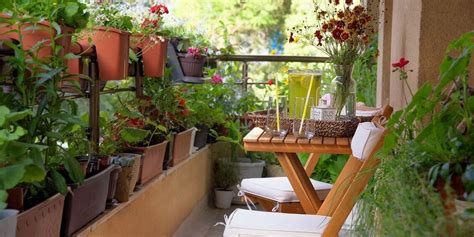Creative Tips for Designing a Fun Balcony Garden for Kids
Planning a balcony garden for kids can be both an educational and exciting activity. It encourages children to engage with nature, learn about plant growth, and develop responsibility in caring for their very own plants. This guide will help you understand how to plan a fun and child-friendly balcony garden while considering factors like sunlight, safety, and container selection. Through this experience, kids can explore gardening in a small space, all while learning valuable life skills.
Key Concepts in Balcony Gardening for Kids
There are several important elements to consider when planning a balcony garden for children:
- Child-Friendly Plants: Choose easy-to-grow, non-toxic plants like herbs, edible flowers, or fast-growing vegetables. These can help children see quick results, keeping them engaged.
- Safety Considerations: Ensure that the balcony space is safe for children with secure railings and containers that won’t easily tip over. Avoid plants that may have thorns or are poisonous.
- Container Selection: Use lightweight and stable containers that are easy to move but sturdy enough to withstand child play.
- Sunlight Exposure: Understand the amount of sunlight your balcony receives, and choose plants that thrive in those conditions.
- Fun and Play: Make the garden experience interactive and fun by incorporating bright containers, garden-themed toys, and personalized plant markers.
Historical Context: Balcony Gardens and Child Education
Gardening with children has been part of education for centuries, helping young learners connect with nature, especially in urban environments where outdoor space is limited. In the early 20th century, school gardens became a popular tool for teaching biology and ecology, an idea that persists today in the form of urban balcony gardens designed for hands-on learning.
Current State of Balcony Gardening
Today, balcony gardens are more than just a hobby; they represent a movement towards sustainability and self-sufficiency. With urbanization increasing, balcony gardens offer a space-efficient way to grow fresh food and create green spaces, even in apartments. This trend is also expanding to include children, who are increasingly being involved in gardening activities at home as part of educational play and environmental awareness.
Practical Applications: Gardening with Kids
Creating a balcony garden with your kids can be an exciting project. Here are some tips to help get started:
- Choose Easy Plants: Start with hardy, fast-growing plants like sunflowers, beans, or mint to show quick results.
- Use Bright Containers: Encourage kids to decorate their pots, making the experience more personal and enjoyable.
- Interactive Tools: Provide child-sized tools, watering cans, and gloves to make gardening feel accessible.
- Storytelling: Create stories around the plants, turning the experience into a fun learning activity.
Case Studies: Successful Balcony Gardens for Kids
Here are a few examples of balcony gardens that have successfully engaged children:
| Project | Key Successes | Challenges Overcome |
|---|---|---|
| “Little Sprouts” Urban Balcony Garden | Incorporated fun DIY projects like plant markers and colorful pots. Children were able to track the growth of their plants. | Limited sunlight was mitigated by choosing shade-tolerant plants like lettuce and spinach. |
| “Grow Together” Family Balcony Garden | Used vertical gardening techniques to maximize space. Each child had their own section of the garden. | Challenges with container stability were solved by using heavy-bottomed pots and securing them with brackets. |
Stakeholder Analysis: Who Benefits from Balcony Gardening?
There are several groups who benefit from balcony gardening with children:
- Children: Develop a deeper connection with nature, learn responsibility, and gain knowledge about plant growth and biology.
- Parents: Spend quality time with their children while teaching them valuable life skills.
- Educational Institutions: Schools can adopt balcony gardens as part of their curriculum, fostering environmental awareness.
- Communities: Encourages the creation of green spaces, even in densely populated areas, contributing to urban beautification and environmental sustainability.
Implementation Guidelines for a Balcony Garden
Follow these steps to set up a kid-friendly balcony garden:
- Assess Sunlight: Observe how much sunlight your balcony receives and choose plants that will thrive in those conditions.
- Choose Containers: Select colorful, durable containers that are easy for kids to handle but won’t tip over easily.
- Select Plants: Focus on fast-growing and easy-to-care-for plants, like herbs, sunflowers, and small vegetables.
- Make It Fun: Add personalized decorations, like painting pots or making fun plant markers.
- Safety First: Ensure the balcony is secure, especially if it’s elevated, and use child-safe gardening tools.
Ethical Considerations in Balcony Gardening
When planning a balcony garden for kids, it is essential to consider:
- Environmental Impact: Using sustainable gardening practices, like composting and water conservation, teaches children about eco-friendly habits.
- Plant Selection: Avoiding invasive species and choosing native plants promotes biodiversity and responsible gardening.
- Child Safety: Prioritize the safety of young gardeners by selecting non-toxic, child-friendly plants and tools.
Limitations and Future Research in Balcony Gardening for Kids
While balcony gardening with children offers many benefits, it also has its limitations. Small spaces can limit the variety of plants that can be grown, and urban environments may not always provide the ideal conditions for every plant species. Future research could explore more effective ways to adapt urban gardening techniques for children’s education, particularly in areas with limited resources or challenging climates. Additionally, innovative gardening technologies, such as hydroponics or vertical gardens, could offer new possibilities for expanding the scope of balcony gardening.
Expert Commentary
Experts in child development and environmental education agree that balcony gardening is an excellent way to engage children in both play and learning. As gardening provides practical education in biology, responsibility, and environmental stewardship, it is a low-cost, high-reward activity for families. Furthermore, this type of gardening allows urban families to create green spaces in limited areas, contributing to both mental well-being and a better understanding of nature. According to environmental educator Sarah Green, “Balcony gardening offers children hands-on experience with nature in environments where access to green spaces may be limited. It’s a valuable educational tool that brings fun and learning together.”


